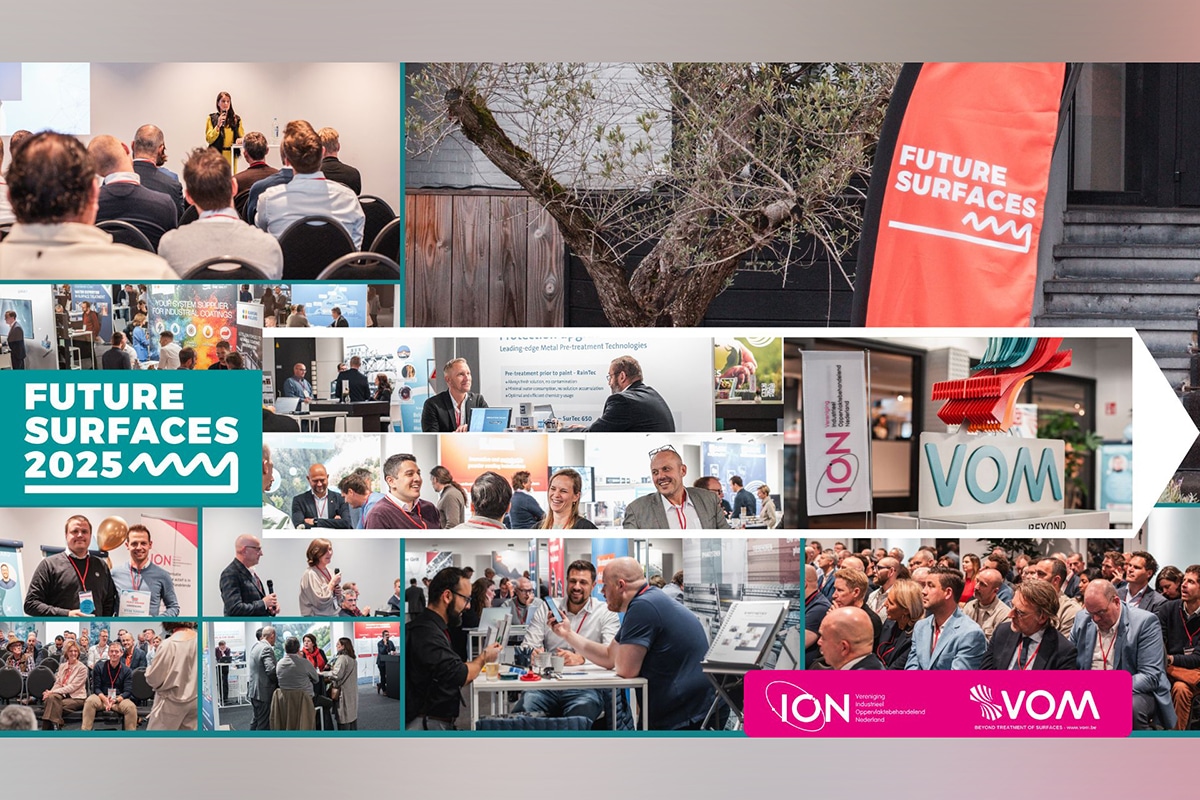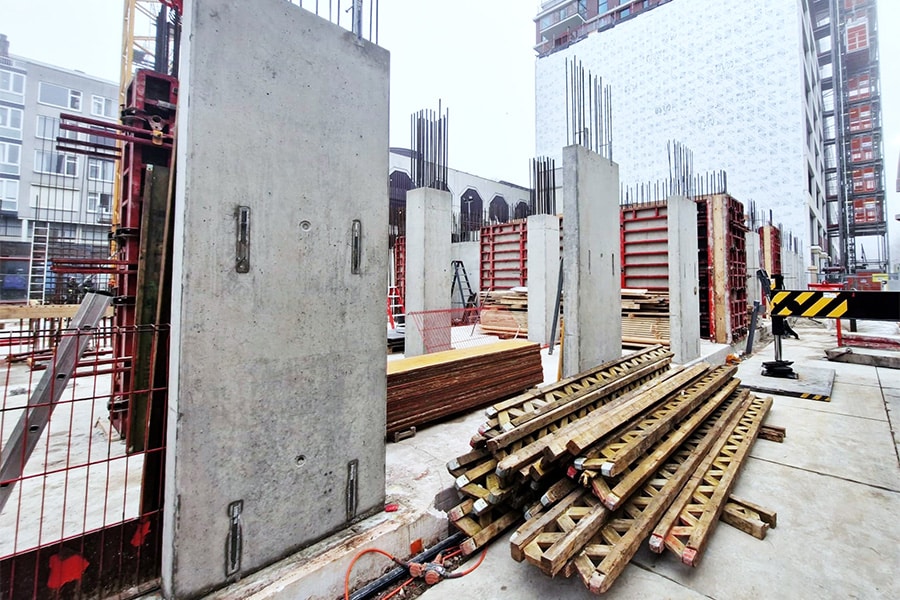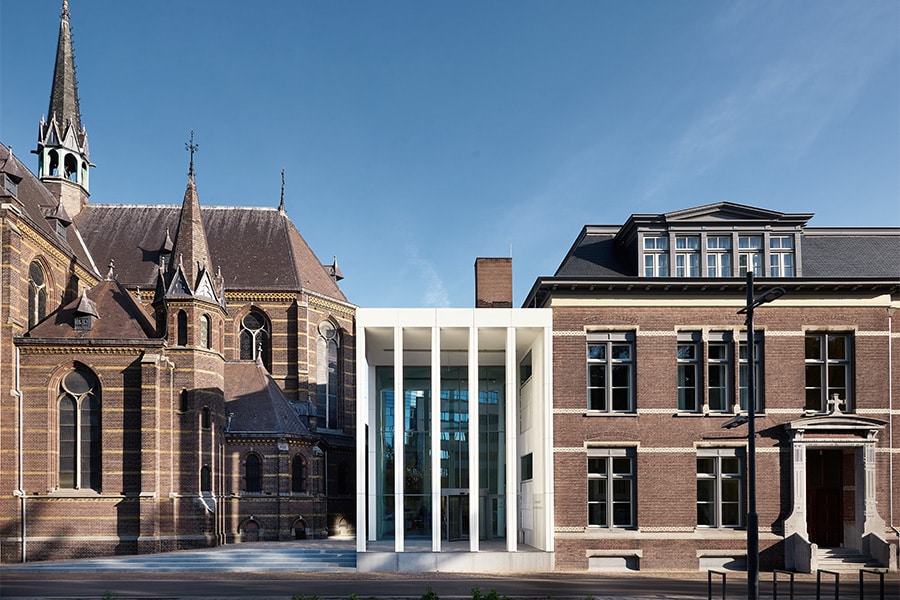
Southern Concrete Repair Afternoon in neo-Gothic State Monument Paters Church
The Zuidelijke BetonReparatieMiddag (ZBRM) will take place on March 27 at the beautiful Paterskerk in Eindhoven. The church dates from the late 19th century and is a typical example of neo-Gothic architecture. In 2019, together with the Augustinian Monastery and the Gymnasium Augustinianum, the church was redeveloped into DOMUSDELA with hotel and space for congresses, ceremonies and events, commissioned by Funeral Company Dela. A new life for monuments ties in nicely with the theme of the ZBRM: Never demolish(?) again. Architectural historian Herman Wesselink, a great expert on church buildings in the Netherlands, will introduce the afternoon and tell something about the Paterskerk and other religious heritage in Eindhoven and what happened to it.
"'Never demolish again' as a motto sounds a bit optimistic, but with advancing techniques, structures will be able to be preserved longer and longer," Wesselink begins. "Now, most monumental churches are not built with concrete, but, like the Paters Church, of brick and wood. They are usually solid structures that if properly maintained can remain standing for many centuries. The same cannot always be said of modern church buildings from the 20th century. There you often see concrete rot after only a few decades, for example. Take the famous chapel of Le Corbusier in Ronchamp with its concrete shell roof on thin columns or the church buildings of architect Auguste Perret. There, tension in the reinforcement and corrosion led to major problems and restoration needs."
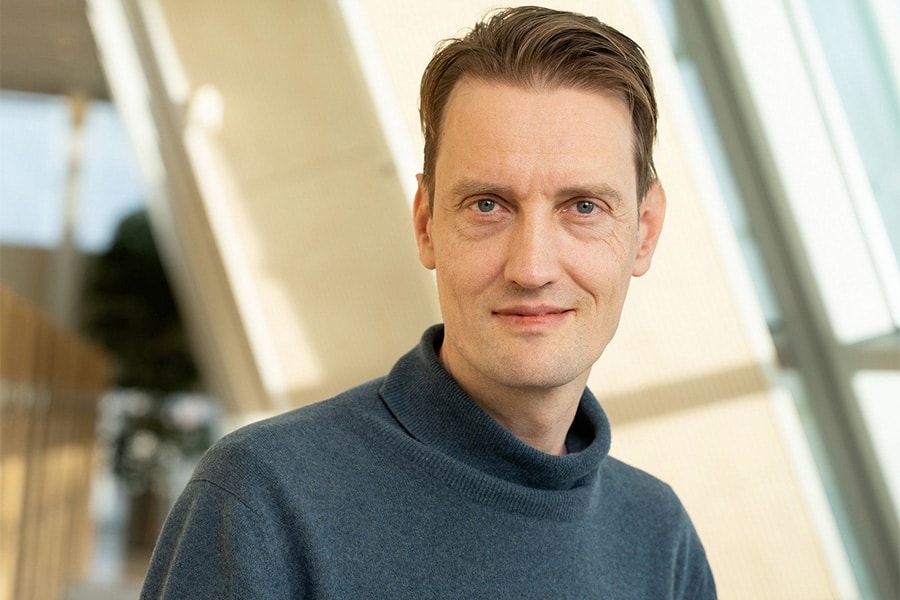
Typical
In that regard, the Paters Church was built better. "We are talking about a three-aisled cruciform church built in 1898 by architects Bekkers and Hegener. It is a characteristic example of a neo-Gothic church by two pupils of Pierre Cuypers, in turn famous for the Central Station and Rijksmuseum in Amsterdam, among others. Red brickwork with yellow bacon layers are typical of Cuypers' late work, and a number of his pupils adopted it. The Paterskerk is extra interesting because of its picturesque silhouette with a large and small tower, which is carefully incorporated into the cityscape. Of particular note is the 66-meter-high large tower that is hexagonal, on top of which stands a four-meter-high wooden Jesus statue clad in copper. Possibly the hexagonal shape was inspired by a pair of similar towers designed by Cuypers."
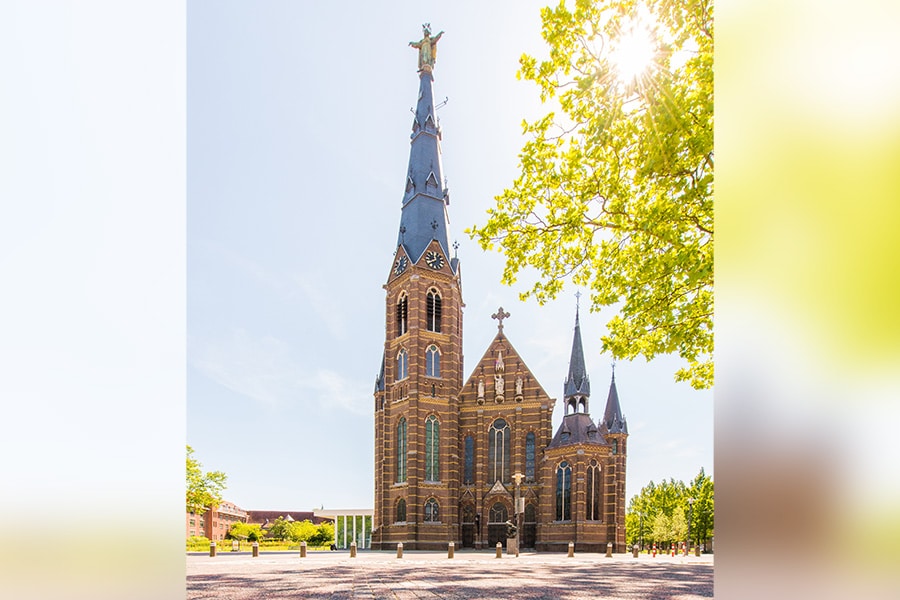
Dynamic place
For the transformation, the church was recently rebuilt and linked with the Augustinian Institute, the Augustinianum gymnasium and the Resurrection Chapel with a transparent partition. "A beautiful design by the architects, making this transformation a good example of how to deal with religious heritage," Wesselink continued. "The complex is located in the middle of a large city with a rich history, where there has always been spatial and economic dynamism. Then such buildings are never empty for long. With heritage in a less dynamic environment, such as in sparsely populated rural regions, you are more likely to see long-term vacancy and that can have a negative impact on the preservation of an object. The Netherlands is in a period of transition and has now become heavily secularized, so the need for repurposing or appropriate secondary use is increasing if we want to preserve monumental church buildings."
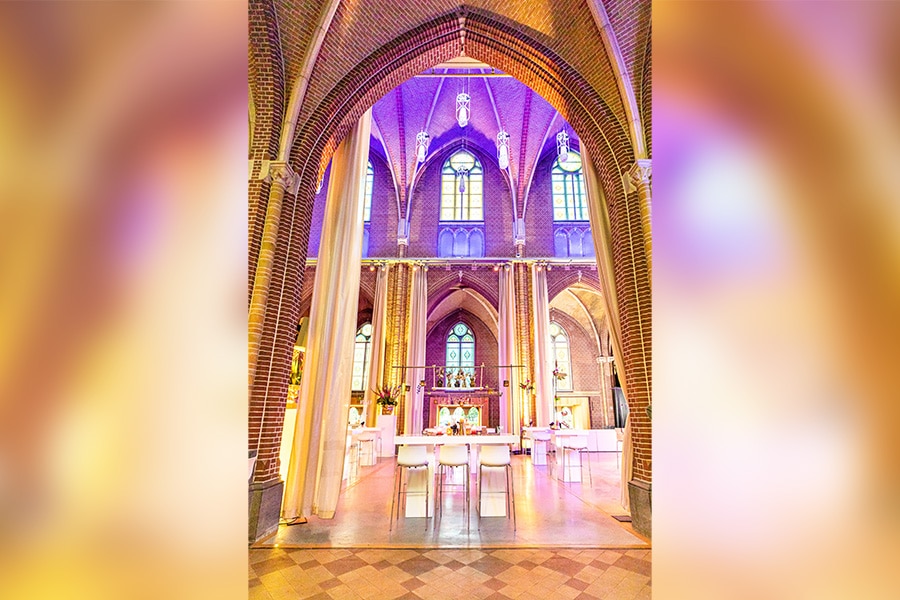
Balance
Transformation of religious heritage like the Paters Church means saying goodbye to many religious aspects. Wesselink: "It is no longer a church when it is withdrawn from worship. In the case of a national monument, it is the municipality that grants the environmental permit and the Rijksdienst voor het Cultureel Erfgoed advises. The new owner must strike a balance between the requirements of the new destination and the monumental values of the building. In this case, in addition to the interior space effect, essential parts of the Paters Church, such as the organ and stained glass windows, were left intact, and confessionals, pews, furniture and the altar were removed. On the outside it still looks like a real church, but inside you can see that it is no longer a religious place."
Interactive church map
From 2012 to 2018, Wesselink conducted doctoral research on church buildings from 1800-1970, resulting in part in an interactive church map. "On it are displayed over 5,000 church buildings of all denominations, expanded in 2020 to include churches from before 1800. Back then Artificial Intelligence, theme of the ZBRM, was not as much talked about as it is today. We then combined historical knowledge of the buildings with interactive software where you can research with search terms. It's a lot of work to keep that current." Whether AI can play a role in that? "In theory yes, in practice we still have a long way to go. But an interesting thought it certainly is."
